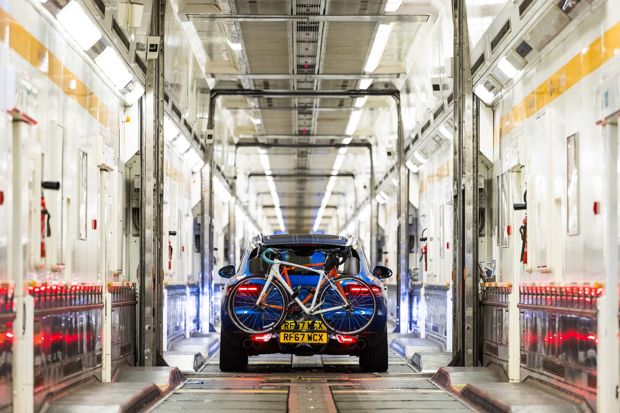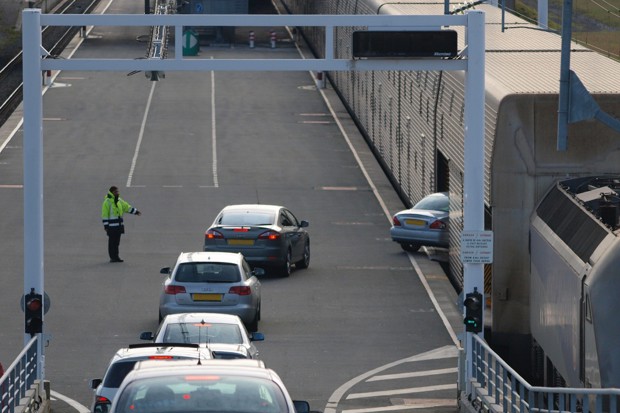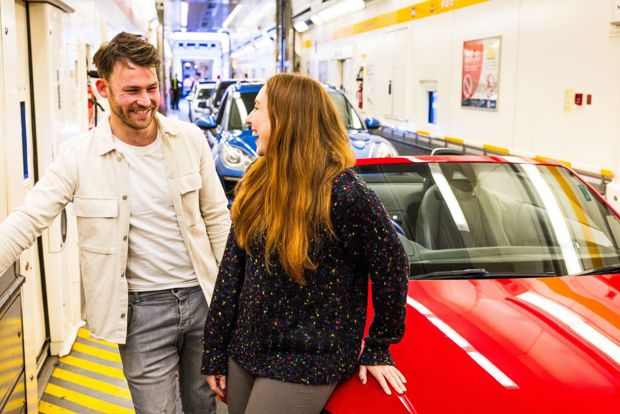Eurotunnel: Taking your car cross-Channel with LeShuttle
LeShuttle’s Eurotunnel rail service is a quicker, greener way to take your car to mainland Europe and back. Here’s everything you need to know about using it.

Although plans for a Channel Tunnel were first drawn-up during Napoleonic times, people who wanted to cross between the UK and mainland Europe without traveling by sea or air had to wait until 1994 when the Eurotunnel first became operational.
With passenger terminals in the UK at Folkestone and in France at Calais, the Eurotunnel is a conduit for train services, rather than for vehicles to drive along, such as the northwards Dartford Crossing.
Even as late as the 1970s after the agreement to physically join the UK and France together had been signed, a road tunnel was being actively considered, as was a massive suspension bridge across the Channel. Eventually a rail tunnel was decided upon for its ability to combine high speeds in a confined environment with a lower accident risk.
Over half a billion people have crossed the Channel using the Eurotunnel in the 30 years since it opened although many who haven’t don’t understand how it all works.
This guide explains everything you need to know about using LeShuttle to take your across under the Channel using the Eurotunnel.
How does the Eurotunnel work?
In many regards, it’s not dissimilar from using a car ferry to cross a body of water. You arrive at the terminal, check in and go through immigration and customs, before waiting in a designated area for the next part of your journey.
The similarities don’t end there, either, because like a ferry you are directed to a point where you board a LeShuttle carriage near the back of the train, driving your car inside towards the front, stopping at the point where a member staff instructs you to.
Unlike a ferry, because LeShuttle services are comparably quick, they have no restaurants or duty free shops on board - although Eurotunnel does provide those at its terminals so you can buy provisions before you drive into the train. However, you can get out of your car to stretch your legs once on board, plus there are toilet facilities in each carriage.
Once the LeShuttle arrives at the opposite Eurotunnel terminal, the doors of one of the front carriages will open and staff will direct you out. And that’s pretty much it - no further border checks or anything of that nature.
It’s worth noting that within a very short distance you are driving on public roads, so ensure you are on the correct side - on the right for mainland Europe, the left in the UK.
How long does the Eurotunnel take?
From the moment LeShuttle departs the Eurotunnel terminal at one end and stops when it reaches the opposite one, the journey will have taken 35 minutes.
Consider the total time that if you arrived at the terminal an hour before departure and the train departed on time, give or take a short period of time for disembarking at the opposite side it’s possible to be driving on public roads again before two hours has passed.
What are the differences between Eurotunnel, LeShuttle and Eurostar?
For those new to the service, the different names can be confusing but once you understand which is which, it all makes more sense.
- Eurotunnel — this is the brand name relating to the infrastructure of the terminals at the British and French sides of the facility plus the three tunnels themselves. The outer tunnels are used for the rail services provided by LeShuttle and Eurostar.
- LeShuttle — this is the rail service for people who want to take their vehicles to mainland Europe and back and which we are concentrating on with this guide.
- Eurostar — for those who simply want to catch a conventional, high-speed train to a number of different European cities, this is the service to use.

How do you book a LeShuttle crossing?
Booking a Channel crossing using LeShuttle's online system is nice and straightforward.
You will be asked to confirm you're booking one-way or return travel, whether your starting point for each journey is the UK or France and dates you would like to travel on.
Next, you will be asked to confirm the number of people who'll be in the car for each crossing as this may differ on return bookings. Details of pets travelling with you can be added later on in the process.
After that you'll be asked for your vehicle's details, including the fuel/energy it uses. While petrol, diesel, hybrid and electric cars are all fine to use LeShuttle, those which also run on flammable gas such as LPG, are not. You will also be asked to confirm whether or not you intend to tow a trailer or caravan for your journey.
When you book your ticket you will be asked about your vehicle’s size — this determines whether it will be catergorised as Medium & Small or Large. Be aware that tickets for Large vehicles are more expensive because they inevitably require more carriage space than smaller ones.
Although the metal kerbs along the internal carriage walkways are low, it’s still possible to damage your car’s wheels against them. If you want to minimize this risk and don’t mind paying extra for the privilege, you can buy a Large vehicle ticket regardless of your car’s size.
From that point you're presented with a grid of ticket price options for the various LeShuttle departure times as well how much flexibility you would like to vary your journey times and whether you would like access to an exclusive pre-travel lounge.
You are restricted to travelling with a maximum of five pets in your car while using LeShuttle, which must be dogs, cats or ferrets with the requisite Animal Health Certificate for those residing in the UK.
How early do you need to arrive for a Eurotunnel crossing?
Travelling between the UK and France requires a valid passport, so these and any other customs-related checks need to be completed before you are permitted to board the train.
Eurotunnel recommends that you arrive at least one hour before your scheduled LeShuttle train but no more than two hours.
Up to nine passengers can travel in one car, while pets can also be taken along providing they have the required documentation. There are pet exercise areas at the terminals as well as an air-conditioned pet reception to help keep them cool and calm.
Once through security, there are large parking areas close to the shops and other Eurotunnel facilities at the terminal, including charging stations for electric vehicles. Off-site filling stations for petrol and diesel vehicles are located close to the exit terminals in both France and the UK.
If you want more of a VIP experience with reduced waiting time in queues before boarding LeShuttle, Eurotunnel operates a premium-priced service called Flexiplus.
How do you board LeShuttle at the Eurotunnel terminals?
Boarding begins 25 minutes before LeShuttle’s scheduled departure time, so by then you will need to be in your car and following the direction signs to your train. Eventually, you will be on what’s essentially the platform and drive onto the train.
If you have booked a ticket for a Medium & Small car you will be directed to double-height LeShuttle carriages, with ramps inside the train to reach the upper deck — the experience is similar to using ramps to change levels in multi-storey car parks.
LeShuttle carriages for Large vehicles have no upper deck and the walkways in the carriage are modified so that there’s more space for wider vehicles.
Can I use the Eurotunnel if I have a roofbox?
Yes, you can roofboxes as well as roof tents and cycle racks on top or behind your car. Even if you have already made a booking, this can be amended before your crossing if you decide later to carry something on the roof.
Be aware that doing so will almost definitely mean your car exceeds 1.85m in height. This is the maximum height before your car would require a Large vehicle booking for a single-storey LeShuttle carriage, which is usually more expensive.

How long is the Eurotunnel?
Linking terminals at Folkestone in the UK and Calais in France, the 32-mile-long Eurotunnel actually consists of three separate tunnels. The two larger ones are for the LeShuttle and Eurostar train services, with a smaller service tunnel nestled between them.
Of the Eurotunnel’s total length, 25 miles is submerged beneath the Channel's bedrock making it the world’s longest undersea tunnel.
What are the advantages of using the Eurotunnel?
Compared with a cross-Channel ferry service, using Eurotunnel and driving your car onto a LeShuttle train, the process is significantly quicker, meaning you have more flexibility in your journey times either side of the terminals.
Not only that, LeShuttle trains are fully electric and produce no carbon dioxide (CO2) while they are in operation.
However, 75% of the electricity required to power the train is generated by renewable methods, meaning that in total a car crossing the Channel via the Eurotunnel will have emitted 52-times less CO2 than if the journey had been made using a fossil fuel-burning ferry.
